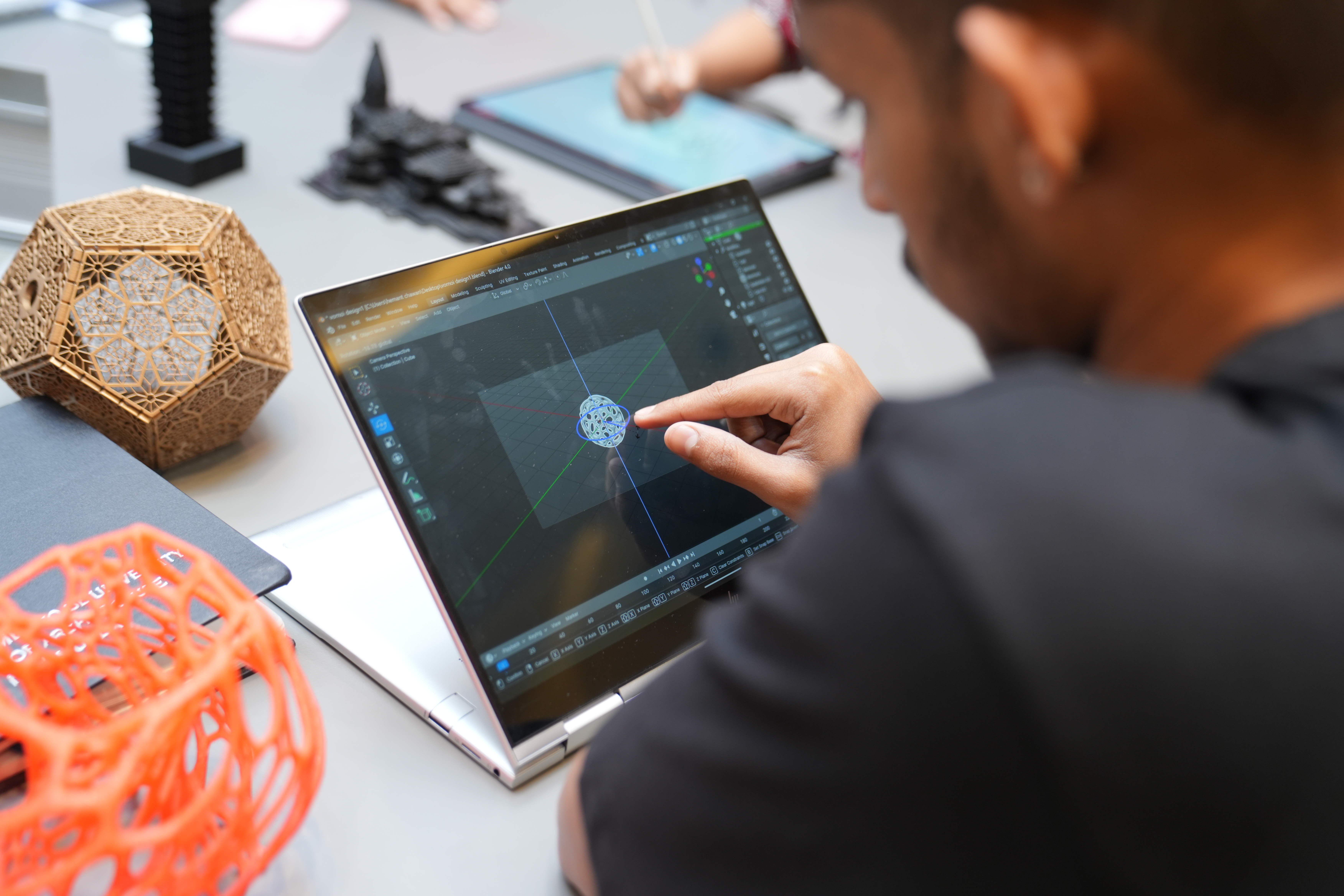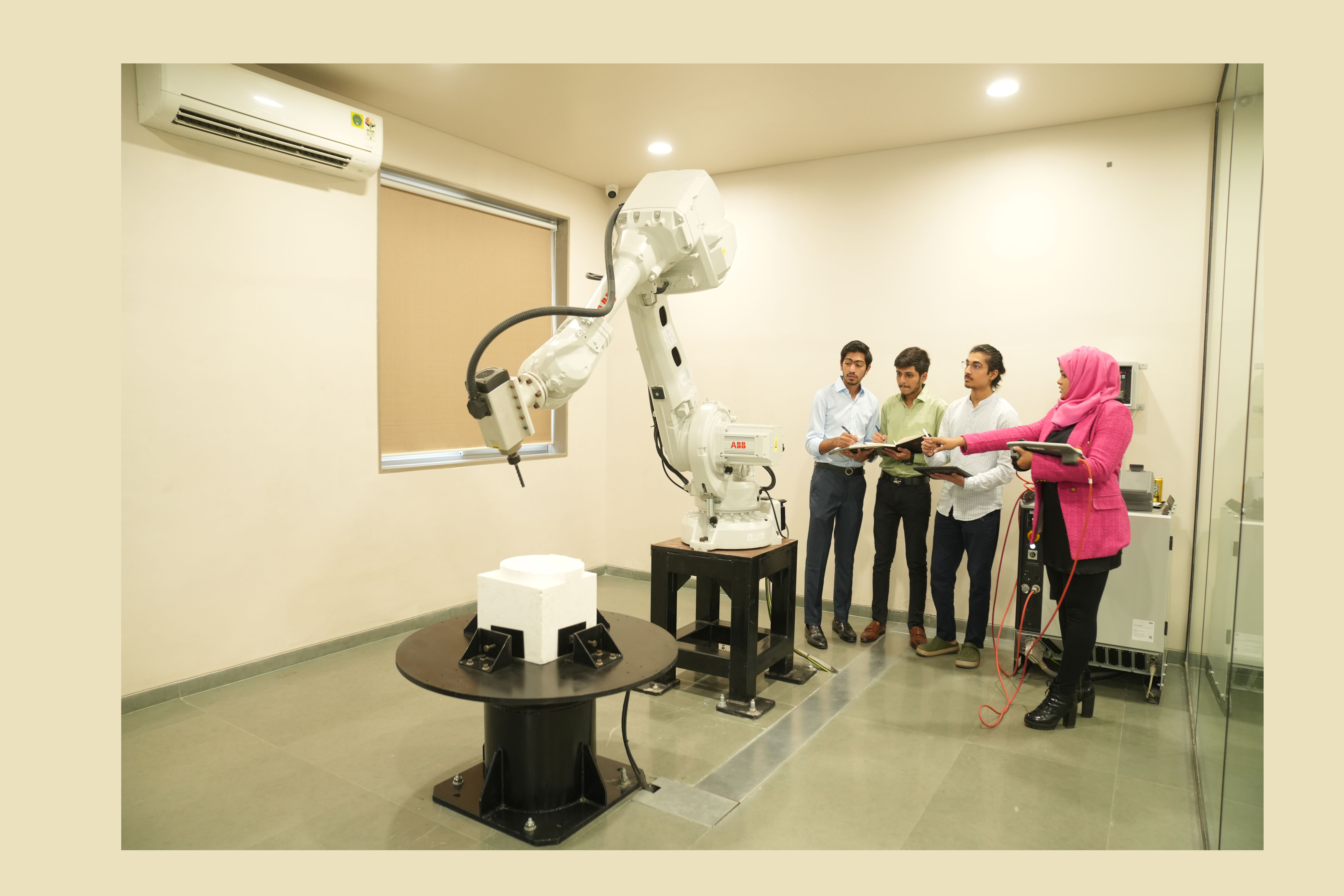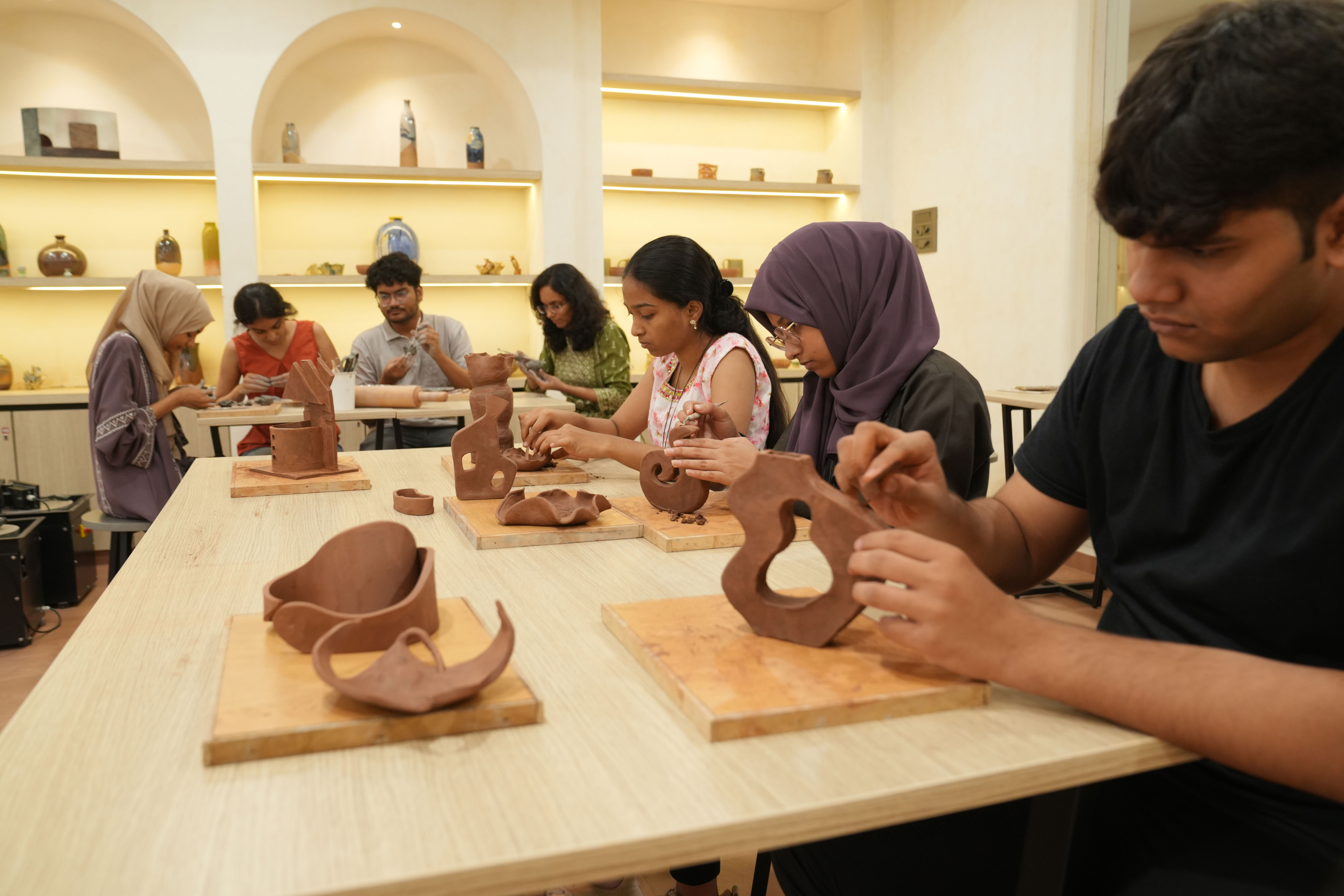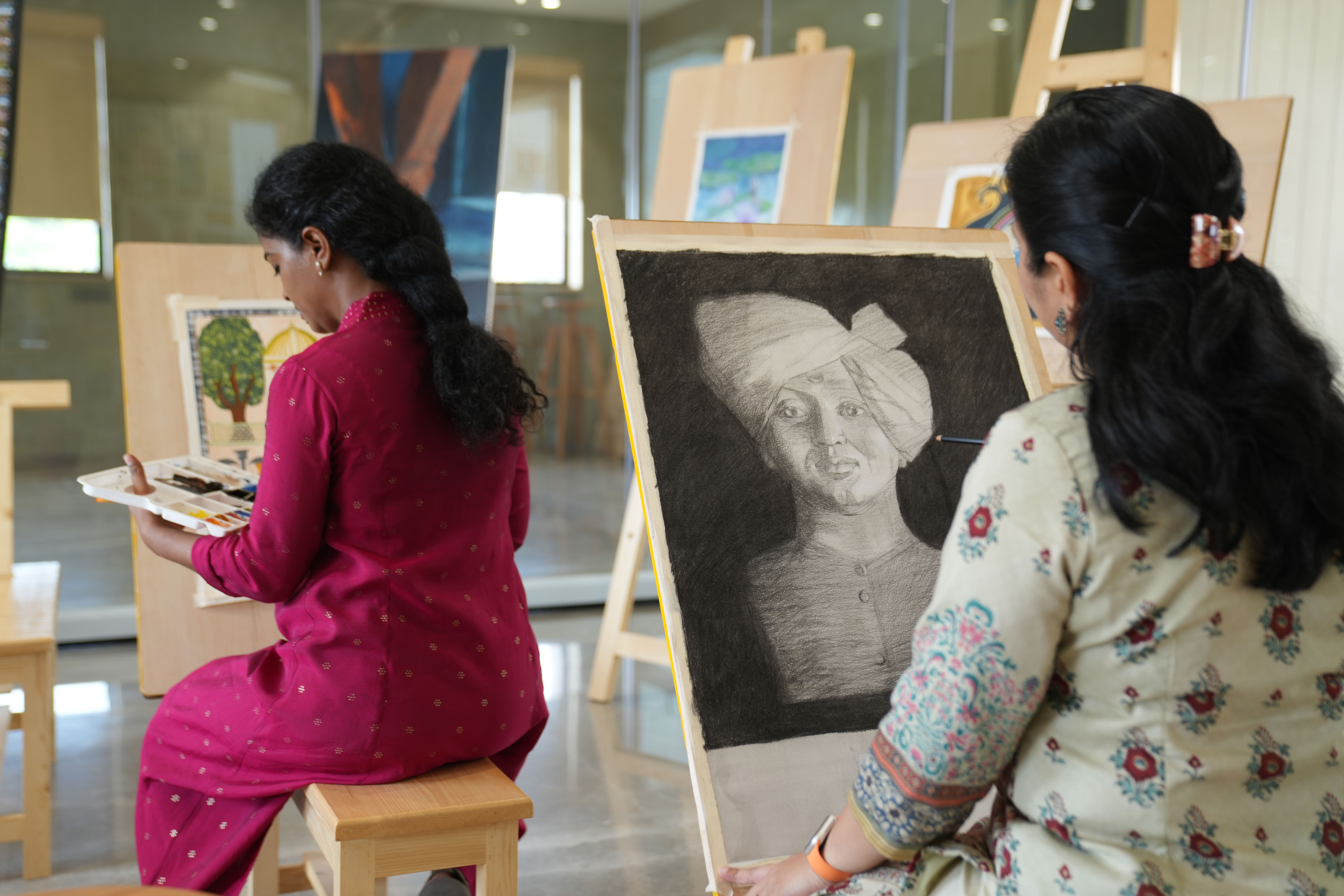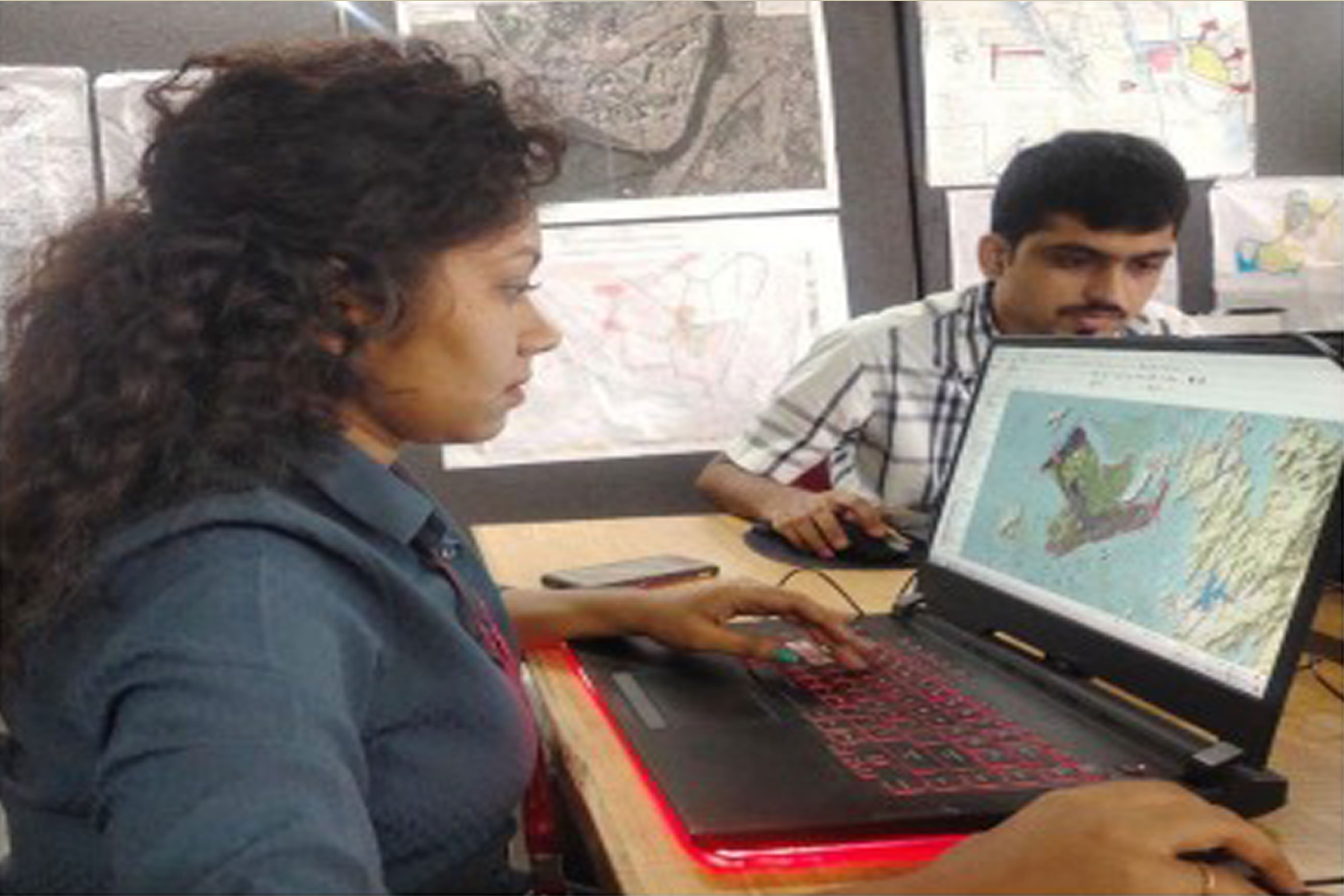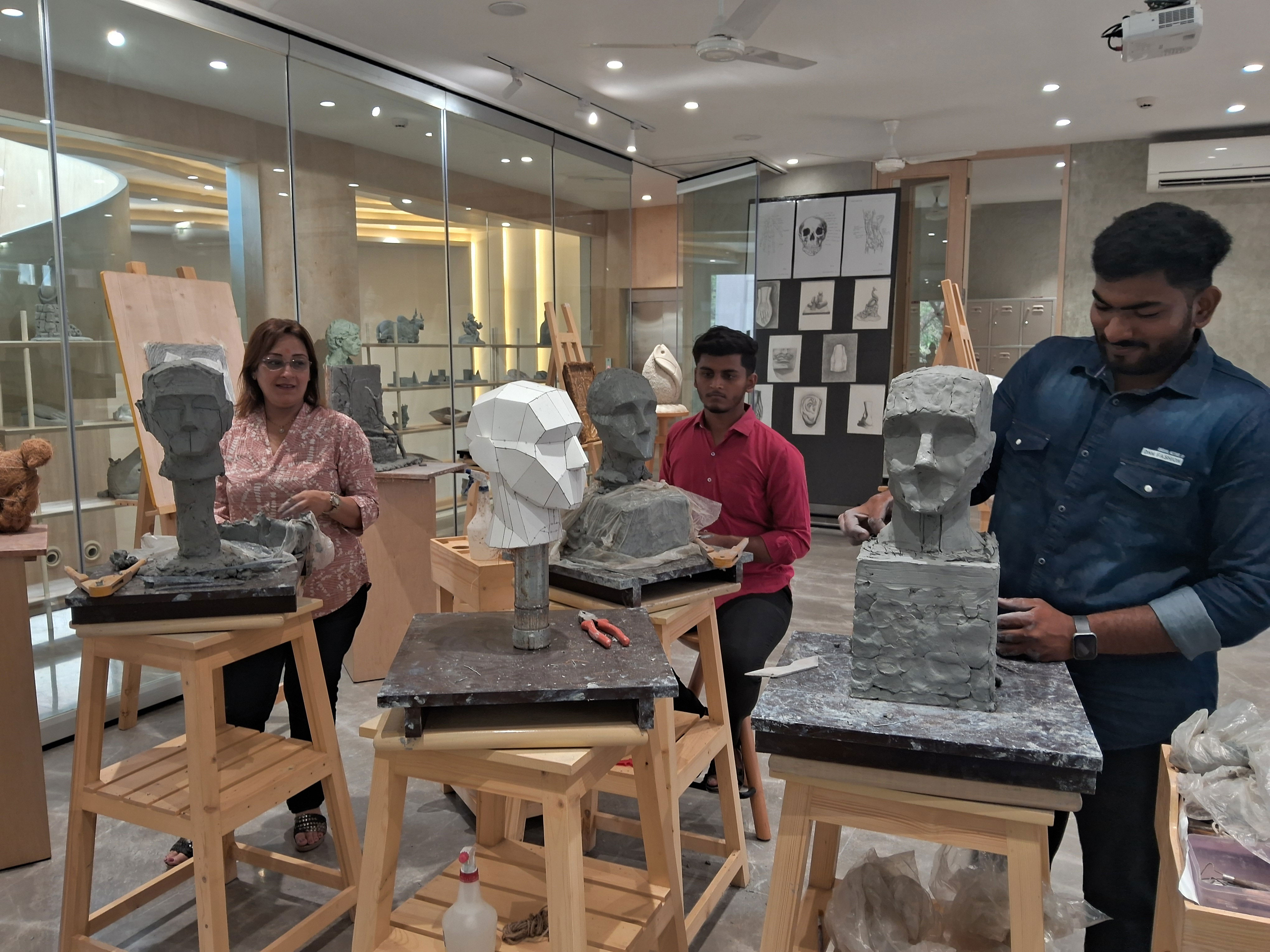About the
Program
By integrating computational and artificial intelligence, this program enables candidates to be industry ready across diverse design sectors, including industrial, fashion and product design. The study of Computational Design fosters the expression of thoughts and ideas through the studies of Art and History, offering a unique perspective to the world. Through the lens of computational Design, participants will be able to perceive complex designs, stimulate, prototype and know how to build and equip them for entrepreneurial pursuits.
The course encourages self-exploration and self-expression, empowering individuals to articulate design thinking and contribute to the process of social change. By marrying the realms of computational and AI, we aim to equip candidates with the necessary tools to become proficient designers capable of creating impactful and thought-provoking design solutions in our ever-evolving world.
Program
Objectives
- Develop a foundational understanding of computational design and AI principles and techniques within the field of design and architecture and foster creativity and critical thinking by drawing insights from art and history to inspire and shape impactful design concepts.
- Develop capacity to adapt various techniques and materials relevant to the ever-changing design practices.
- Develop a foundational proficiency in fabrication techniques and prototyping methodologies, allowing candidates to translate design concepts into tangible prototypes, effectively bridging the gap between digital models and physical realisation.
- Cultivate an entrepreneurial mindset among participants, equipping them with the necessary tools to identify and pursue opportunities for innovative design solutions in diverse sectors.
Program
Syllabus
This course is beneficial for student seeking essential education in the field of computational design, focusing on techniques/software skills/equipment knowledge
1. DESIGN
This module encompasses perspective on the Theory and Timeline of Computational Design, tracing its evolution through time. It is a comprehensive approach into the fusion of AI and Graphics, uncovering novel ways to enhance design processes. The curriculum further delves into the practical realm, guiding individuals in crafting physical prototypes through CAD and CAM Software. Through a meticulous approach, the program teaches the art of comparing designs, iteratively refining prototypes, and translating them into tangible forms through machining. Culminating the learning journey, participants gain the expertise to finalise designs primed for efficient manufacturing processes.
2. CODE
This module aims to cultivate a comprehensive grasp of Computational Design software.Through practical exercises, participants will engage in hands-on learning, honing their skills in the realm of Computational Design. Moreover, the module delves into the synergy between Computational Design and AI, offering exercises that amalgamate these two dynamic fields. By bridging the gap between theory and application, participants will not only harness the power of Computational Design but also explore its innovative fusion with AI training techniques.
3. BUILD
The journey of manufacturing begins with an essential phase: Introduction to CAM setups. Here, the foundation for bringing ideas to life is laid, encompassing the utilisation of Computer-Aided Manufacturing to streamline processes. Moving forward, the process entails Prototyping and Finalizing Designs, employing techniques like 3D printing and CNC machining. These technologies enable iterative improvements,ensuring designs are perfected before progressing to the next stage. Ultimately, the focus shifts to Production and Installation, where meticulously crafted designs materialize into tangible products, marking the culmination of efficient CAM-driven workflows.
Program
Infrastructure
Our Visual Art and Computational Design labs are equipped with a blend of traditional studio facilities and cutting-edge digital technology. The infrastructure supports creative exploration across mediums, combining hands-on art-making with advanced computational tools. Key resources include high-resolution drawing tablets, 3D printers, laser cutters, VR/AR systems, powerful workstations with design software (such as Adobe Creative Suite, Blender, Rhino, and Processing), and dedicated spaces for digital fabrication and projection-based installations. These labs foster a multidisciplinary approach, encouraging innovation at the intersection of art, design, and computation.
